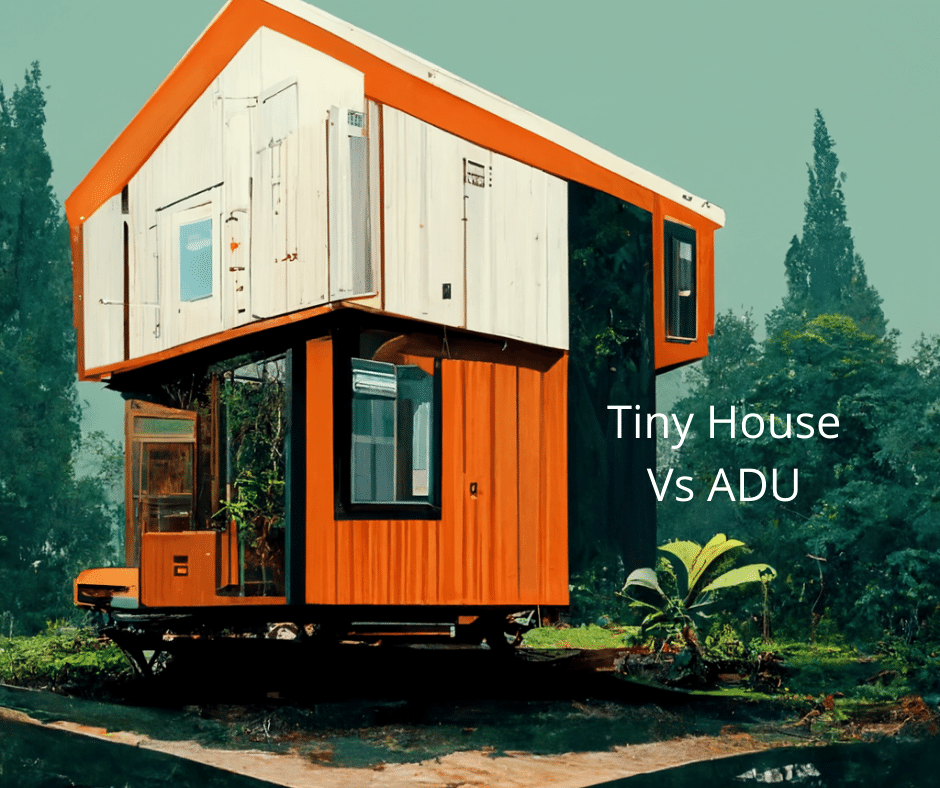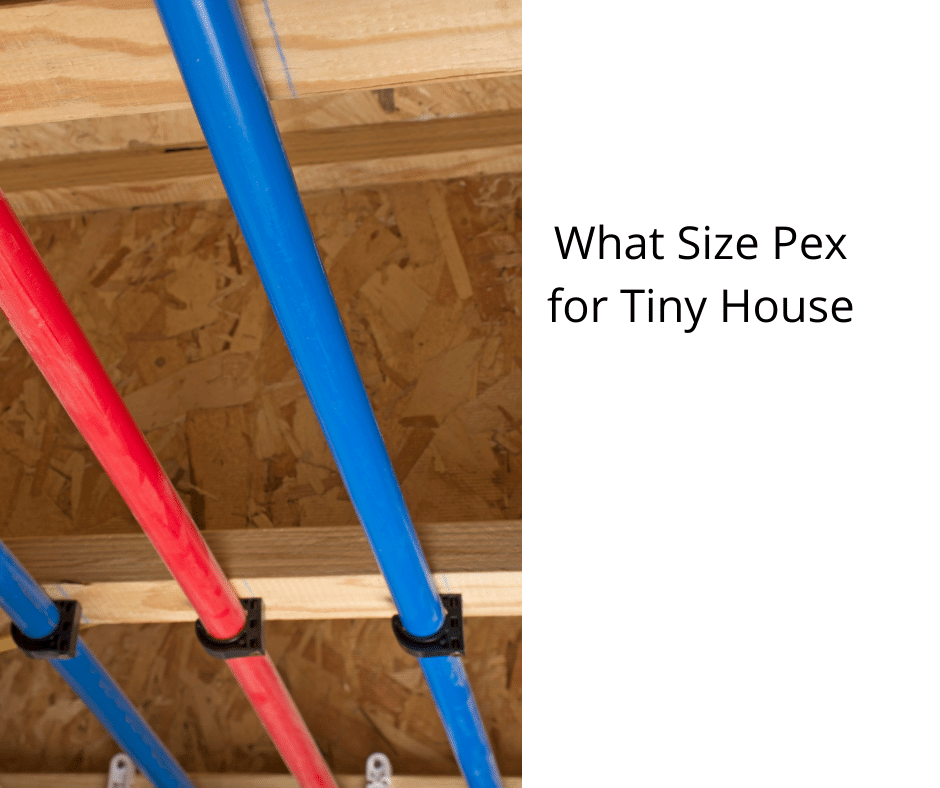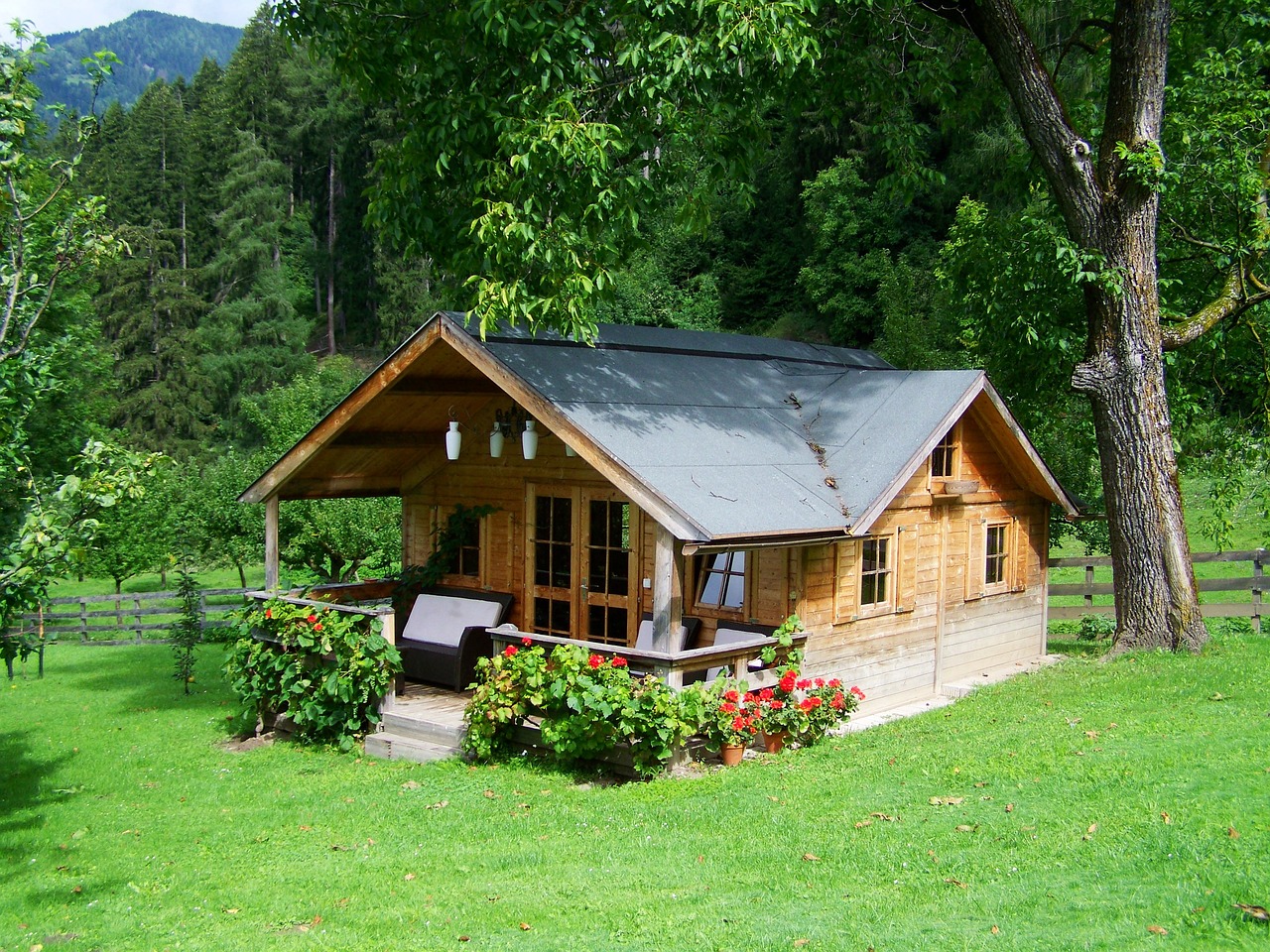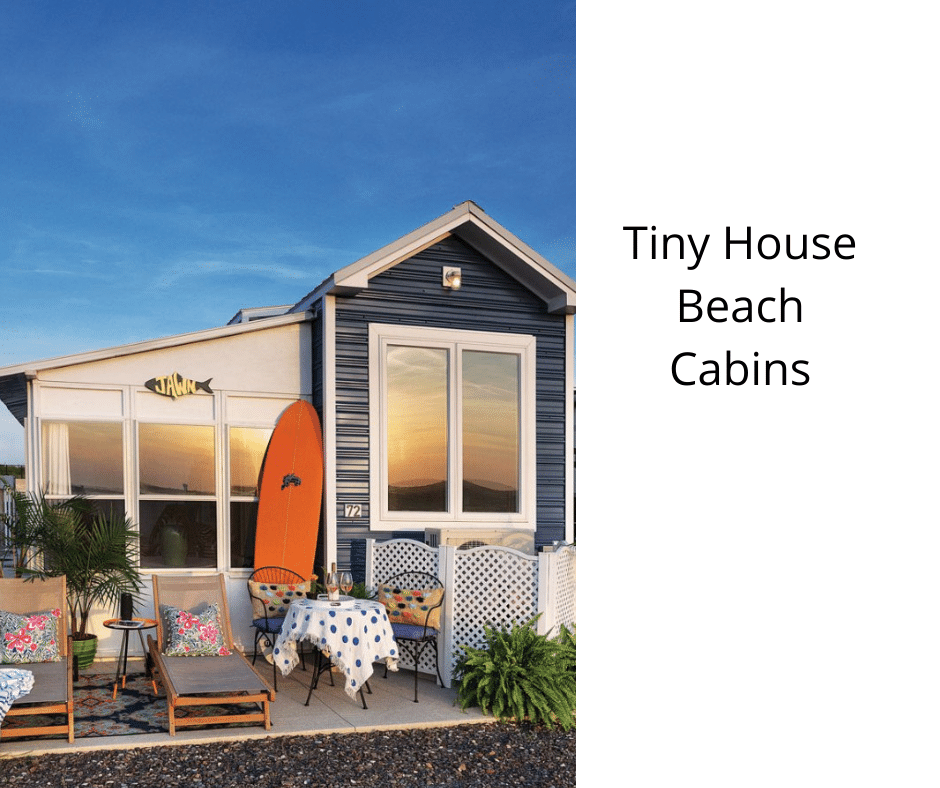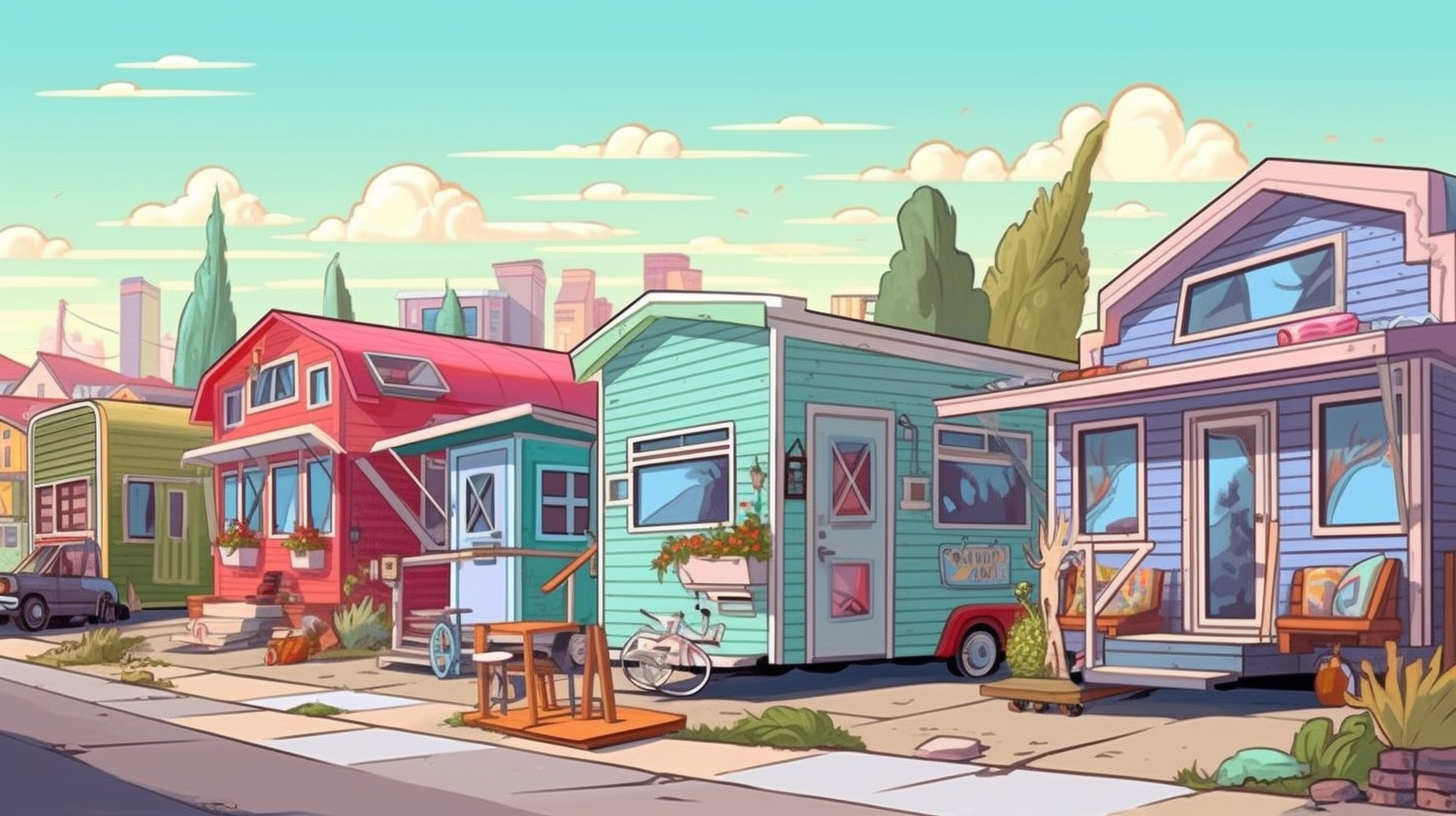A tiny home is a cozy living space meant to be long-lasting. However, once it’s built on a piece of land, it falls under the category of an Accessory Dwelling Unit (ADU). Both housing options have their own pros and cons, so it’s important to fully comprehend your preferences before making a final decision.
Smaller
The choice between a small, portable tiny house or an ADU depends largely on your lifestyle and budget. Both can provide flexibility and space for your family, and are great alternatives to a traditional house. There are many benefits and drawbacks to both types of housing, and it can be helpful to weigh the pros and cons of both to find the right choice for your lifestyle.
One of the benefits of ADUs is that they are typically smaller and cheaper to build than tiny houses. They can be attached to an existing house and share central systems. These homes are also much more durable, which means they will provide a better return on investment. They are also easier to build and require less space, which is another plus.
Another benefit of ADUs is that they are permanent installations, and are legally a part of a larger property. Unlike tiny houses, however, these are not legal to live in. If you want to live in an ADU, you’ll need to have a building permit.
An ADU is easier to build than a tiny house, and it resides on an existing single-family lot. ADUs also add value to your property, unlike tiny homes. And since they are smaller than your primary residence, they tend to be less expensive to operate and maintain. Regardless of your preferences, ADUs can serve a variety of purposes, from housing elderly relatives to pursuing hobbies.
More Affordable
Tiny houses are both temporary and permanent dwelling units. ADUs are attached to an existing dwelling unit, usually a single-family suburban home. There are benefits and disadvantages to both types of housing. It’s important to consider your lifestyle and goals when choosing between an ADU or a tiny house.
ADUs and tiny houses share similar features. However, the return on investment is different. ADUs are permanent, detached structures that are typically attached to a single-family residence. As such, they require a building permit. Fortunately, recent changes to building codes make permitting easier and more convenient.
While ADUs are often more expensive than tiny houses, they can be a better option for some homeowners. Many states, like California, have laws allowing for smaller homes to be legally used as ADUs. In California, these units can be 500 square feet or less.
The benefits of ADU housing are numerous. ADUs can save money and be close to family and friends. They can also provide an extra income stream. One survey found that 78% of respondents would install an ADU on their property as a rental unit. Of these, 58% would install it as a long-term rental and 20% would use it as a short-term rental.
The two types of homes also differ in insurance costs. The cost of an ADU insurance policy is typically higher than that of a tiny home, but both are still affordable. They are also subject to different zoning laws. ADU insurance usually costs between $500-$1500 for a six-month policy, while the cost of a tiny house insurance policy is around $600. However, because of their increased size, ADU homes require more home repairs than tiny houses do.
More Environmentally Friendly
There are several differences between an ADU and a tiny house, but they do have some things in common. Both are small, single-family dwellings, and are built on existing, single-family lots. An ADU is more permanent than a tiny house, and they are usually smaller than 200 square feet. They are also less expensive to build and operate, as they require a smaller footprint than the main house. ADUs are also great for accommodating elderly family members or exploring new hobbies and interests.
Tiny homes are smaller than ADUs, but the dividing line between these two is subjective. For example, an ADU can only accommodate two people, while a tiny house can accommodate up to three. But both types of tiny houses can be very eco-friendly, and the choice is up to you.
Tiny houses are also more energy-efficient, as their energy use is much smaller than a typical home. They have smaller appliances and use less electricity than standard homes. As a result, they require less energy to heat and cool. They can be a great choice for a growing family.
Tiny houses typically come on wheels, so they are mobile. However, they cannot be inhabited in residential areas without a permit. ADUs, on the other hand, are permanent and built on the property. Moreover, they don’t require a permit, and they tend to give a higher return on investment.
More Convenient
There are many differences between a tiny house and an ADU, so it is important to decide which one is best for you. A tiny house is often smaller than an ADU, but it still can meet many of your needs. The square footage requirement of an ADU is typically higher than that of a tiny house, though it can vary. ADUs are commonly used for mother-in-law suites, work sheds, studio apartments, and more.
ADUs and tiny houses are both legal options. They are additions to a larger dwelling unit, which is typically a single-family suburban home. Tiny houses are portable and can be used on a temporary basis, but ADUs are permanent installations. ADUs are often bigger than tiny houses, but are still legal and part of the larger property.
ADUs are also easier to build than tiny houses. They are not mobile like tiny homes, but they can be built on an existing single-family lot, adding value to your property. They also cost less to operate than tiny houses. ADUs are ideal for accommodating elderly family members or for exploring new hobbies.
Less Expensive to Build
It can be less expensive to build a tiny house than you think. Most prefabricated homes cost around $25,000, while a custom home may cost up to $200,000. The cost of building a tiny house depends on the size and location of the site. If you’re building a custom tiny home, you should expect to pay between $30,000 and $25,000 for materials, labor, and land.
The cost to build a tiny house will vary widely depending on the area and zip code you choose. It’s best to get an estimate before committing to a particular tiny house design and size. You can even cut costs by purchasing used appliances and furnishings. You can always replace them with new ones if your budget allows.
If you decide to build a tiny house on a foundation, you’ll need to hire a licensed electrician and plumber. While you’ll save money by doing the plumbing and wiring yourself, you’ll still have to pay for permits. And you’ll have to pay the cost of property taxes and insurance.
Electricity is an essential utility in tiny homes. Electricity is not a cheap luxury – if you’re living in the middle of the wilderness, you might have to pay around $5,000 just to hook up your tiny house to an existing electrical line. Additionally, you’ll need to pay fees to access the municipal sewer system and natural gas. In some cases, you might even need to pay monthly fees for electricity and water.
Maintenance and repair costs are another major cost. However, compared to full-size homes, the cost of maintenance for a tiny house is considerably less. However, the cost of maintenance will depend on the quality of the materials and workmanship.
Hi, I’m Emma. I’m the Editor in Chief of Tiny House 43, a blog all about tiny houses. While tree houses are often associated with childhood, they can be the perfect adult retreat. They offer a cozy space to relax and unwind, surrounded by nature. And since they’re typically built on stilts or raised platforms, they offer stunning views that traditional homes simply can’t match. If you’re looking for a unique and romantic getaway, a tree house tiny house might just be the perfect option.
